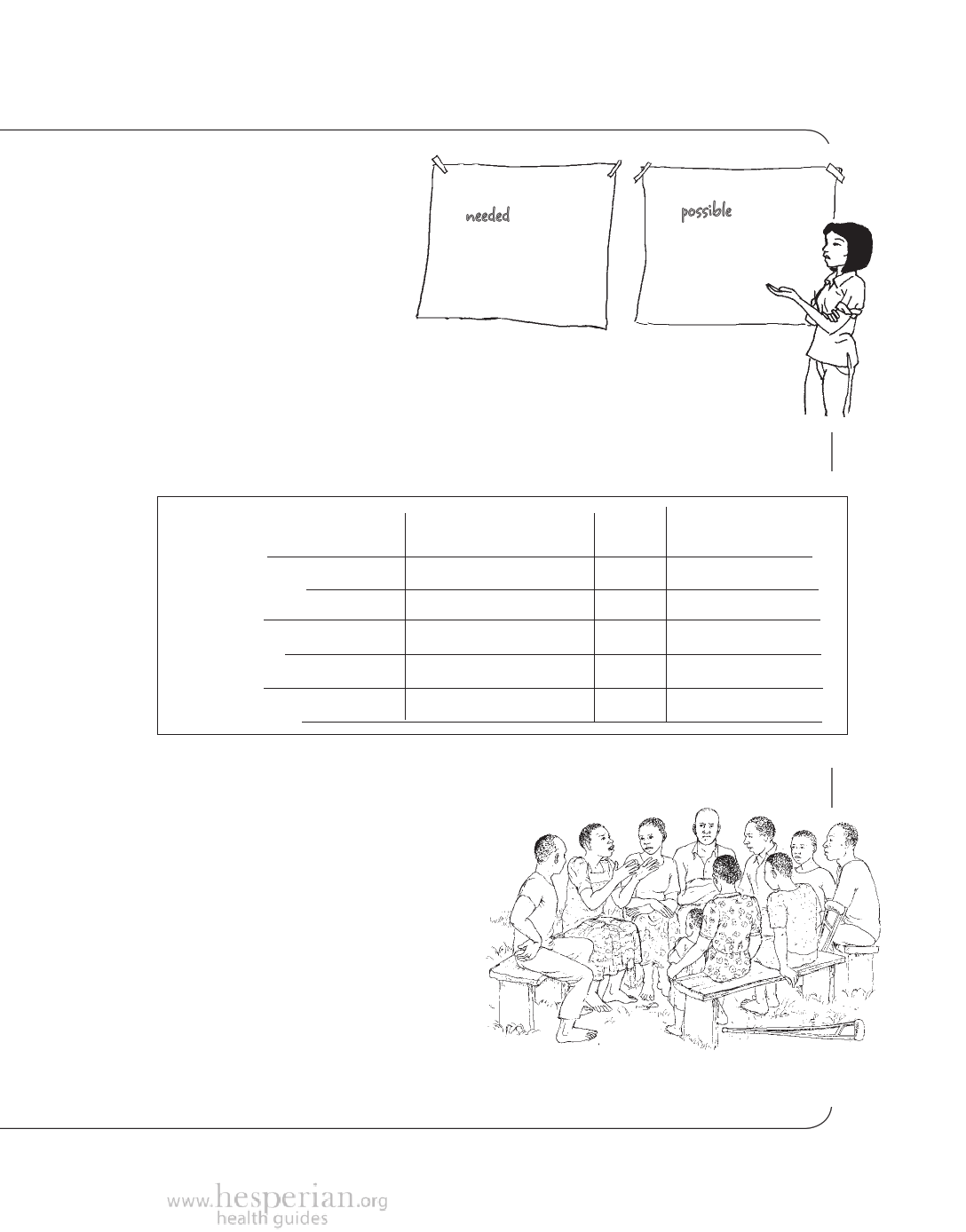
Pour Flush Pit Toilets 139
➎ Introduce other toilets that
people may not know about.
This may include small changes
to their current toilets such as
vent pipes, or a new type of
toilet. (It may include all the
methods in this book, and
others you may know of.) The
group discusses these new ideas.
To know what changes
are needed, decide what
health benefits and
environmental benefits
matter most.
To know what changes
are possible, decide
which sanitation
systems people want
and can afford.
➏ Lead a discussion about the different methods, asking the group to think about
the questions in the chart below. Each person shares his or her opinion about the
benefits and shortcomings of each toilet, using numbers to show how strongly he
or she feels. For example, 5 may mean the best and 0 may mean the worst. Mark
each person’s opinion on the chart and count to see which method is judged best.
Health benefits?
No toilet
Closed pit toilet
VIP toilet
Compost toilet
Dry toilet
Pour flush toilet
Environmental benefits?
Cost?
Work to clean
and maintain
➐ The group makes new drawings based on the discussion of benefits and the new
methods they have learned about. They tape the
new and old drawings to large sheets of paper
in order from worst to best. Finally, they
compare the new order of the methods
to the earlier order they had chosen.
• What differences are there?
• What ideas or information caused
people to change their minds about
what toilets are worst and best?
Based on this discussion, the group can
decide what toilet or improvement is
best for them.
Communication between men and women is an
important part of choosing safe and healthy toilets.
A Community Guide to Environmental Health 2012